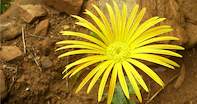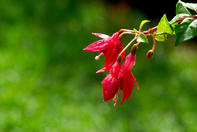The historic town of Barberton is primarily known for its rich gold mining past and the Makhonjwa Mountains, a World Heritage Site. But did you know that Barberton is also home to a bountiful botanical landscape? Barberton’s botanical environment includes dense forests, grasslands populated with useful herbs, and a lowland savannah.

In the midst of all this natural wonder lies the iconic Barberton daisy. Its scientific name, Gerbera jamesonii, belies its classic grace.
The Barberton daisy is, as its name indicates, indigenous to Barberton and a perennial flower with colourful blooms ranging from red, pink and orange.
Not your average daisy, the Barberton daisy, has achieved far-reaching popularity from being the Coat of Arms of the Mpumalanga province to being the emblem of the Blue Bulls rugby team.
This delightful flower not only adds charm to the outdoors, but is also a favourite addition to flower arrangements and as such is considered one of the most sourced flowers for decorative display.
Barberton Flora

The flower kingdom of Barberton is a grand display of distinguished floral life with over 1 500 species of flora. It has the noteworthy position of being the home to several indigenous flower plants such as the clivia with its burst of vibrant orange and the striking Pride of De Kaap, which is both pleasant in form and easy to grow.
Other notable flowering plants that are native to Barberton are the Barberton Lowveld sugarbush (scientific name: Protea curvata) known for its magenta hue and the Barberton Mountain sugarbush (scientific name: Protea comptonii), which blooms during the months of May and August in a flourish of white and yellow.
Last, but certainly not least, is the Barberton cycad. This seed plant once large in number has dwindled in size. This is believed due to its gathering for horticultural uses. The Barberton cycad can be found in forests, mountain slopes and along ravines.
Plant Lovers
Barberton’s fertile environment has attracted several distinguished naturalists and botanists, namely the famous plant collectors: George Thorncroft and Ernet Galpin.
Continuing the tradition of naming discoveries after the discoverer, the plant species Thorncroftia longifolia and Aloe thorncroftii are named after George Thorncroft, while Bauhinia galpinii and Streptocarpus galpini are named after Ernet Galpin.
Today, many of Barberton’s species are protected in honour of maintaining the living heritage in conservation areas.
 The old mining town of Barberton is nestled along South Africa’s 10th World Heritage Site, the Makhonjwa Mountains in the De Kaap Valley o...
The old mining town of Barberton is nestled along South Africa’s 10th World Heritage Site, the Makhonjwa Mountains in the De Kaap Valley o... Treat your eyes and activate your muscles in one hearty swoop with a nature walk through the green landscape of Barberton. A popular scenic ...
Treat your eyes and activate your muscles in one hearty swoop with a nature walk through the green landscape of Barberton. A popular scenic ...